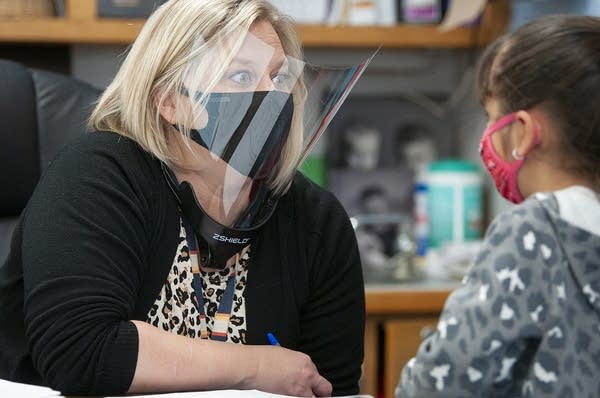Majority of MN students now have option to attend school in person

Jodi Nixon uses her eyes to express emotion while working on phonics with a student in her second-grade class at North Elementary in St. Peter, Minn. Weeks after Gov. Tim Walz urged secondary schools to open their buildings, approximately 90 percent of Minnesota schools are offering students the option to attend some form of in-person classes. But in some areas, many students are opting for distance learning, even when they have the chance to go back in person.
Jackson Forderer for MPR News
Go Deeper.
Create an account or log in to save stories.
Like this?
Thanks for liking this story! We have added it to a list of your favorite stories.


